*NURSING > EXAM > ATI Med Surg test questions Fluid and Electrolytes Balance and Disturbance-With 100% verified solu (All)
ATI Med Surg test questions Fluid and Electrolytes Balance and Disturbance-With 100% verified solutions-2023-2024
Document Content and Description Below
ATI Med Surg test questions Fluid and Electrolytes Balance and Disturbance-With 100% verified solutions-2023-2024 Answer Key Question 1: (see full question) An elderly client takes 40 mg of... Lasix twice a day. Which electrolyte imbalance is the most serious adverse effect of diuretic use? You selected: Hypokalemia Correct Explanation: Hypokalemia (potassium level below 3.5 mEq/L) usually indicates a defict in total potassium stores. Potassium-losing diuretics, such as loop diuretics, can induce hypokalemia. Reference: Hinkle, J.L., and Cheever, K.H. Brunner & Suddarth's Textbook of Medical-Surgical Nursing, 13th ed. Philadelphia: Lippincott Williams & Wilkins, 2014, Chapter 13: Fluid and Electrolytes: Balance and Disturbance, p. 255. Chapter 13: Fluid and Electrolytes: Balance and Disturbance - Page 255 Question 2: (see full question) The nurse is reviewing client lab work for a critical lab value. Which value is called to the physician for additional orders? Correct response: Potassium: 5.8 mEq/L Explanation: Normal potassium level is 3.5 to 5.5 mEq/L. Elevated potassium levels can lead to muscle weakness, paresthesias, and cardiac dysrhythmias. Reference: Hinkle, J.L., and Cheever, K.H. Brunner & Suddarth's Textbook of Medical-Surgical Nursing, 13th ed. Philadelphia: Lippincott Williams & Wilkins, 2014, Chapter 13: Fluid and Electrolytes: Balance and Disturbance, p. 254. Chapter 13: Fluid and Electrolytes: Balance and Disturbance - Page 254 Question 3: (see full question) A client with pancreatic cancer has the following blood chemistry profile: Glucose, fasting: 204 mg/dl; blood urea nitrogen (BUN): 12 mg/dl; Creatinine: 0.9 mg/dl; Sodium: 136 mEq/L; Potassium: 2.2 mEq/L; Chloride: 99 mEq/L; CO2: 33 mEq/L. Which result should the nurse identify as critical and report immediately? You selected: Potassium Correct Explanation: The nurse should identify potassium: 2.2 mEq/L as critical because a normal potassium level is 3.8 to 5.5 mEq/L. Severe hypokalemia can cause cardiac and respiratory arrest, possibly leading to death. Hypokalemia also depresses the release of insulin and results in glucose intolerance. The glucose level is above normal (normal is 75 to 110 mg/dl) and the chloride level is a bit low (normal is 100 to 110 mEq/L). Although these levels should be reported, neither is life-threatening. The BUN (normal is 8 to 26 mg/dl) and creatinine (normal is 0.8 to 1.4 mg/dl) are within normal range. (less) [Show More]
Last updated: 1 month ago
Preview 5 out of 55 pages

Loading document previews ...
Buy this document to get the full access instantly
Instant Download Access after purchase
Buy NowInstant download
We Accept:

Reviews( 0 )
$18.50
Can't find what you want? Try our AI powered Search
Document information
Connected school, study & course
About the document
Uploaded On
Jul 03, 2025
Number of pages
55
Written in
Additional information
This document has been written for:
Uploaded
Jul 03, 2025
Downloads
0
Views
11

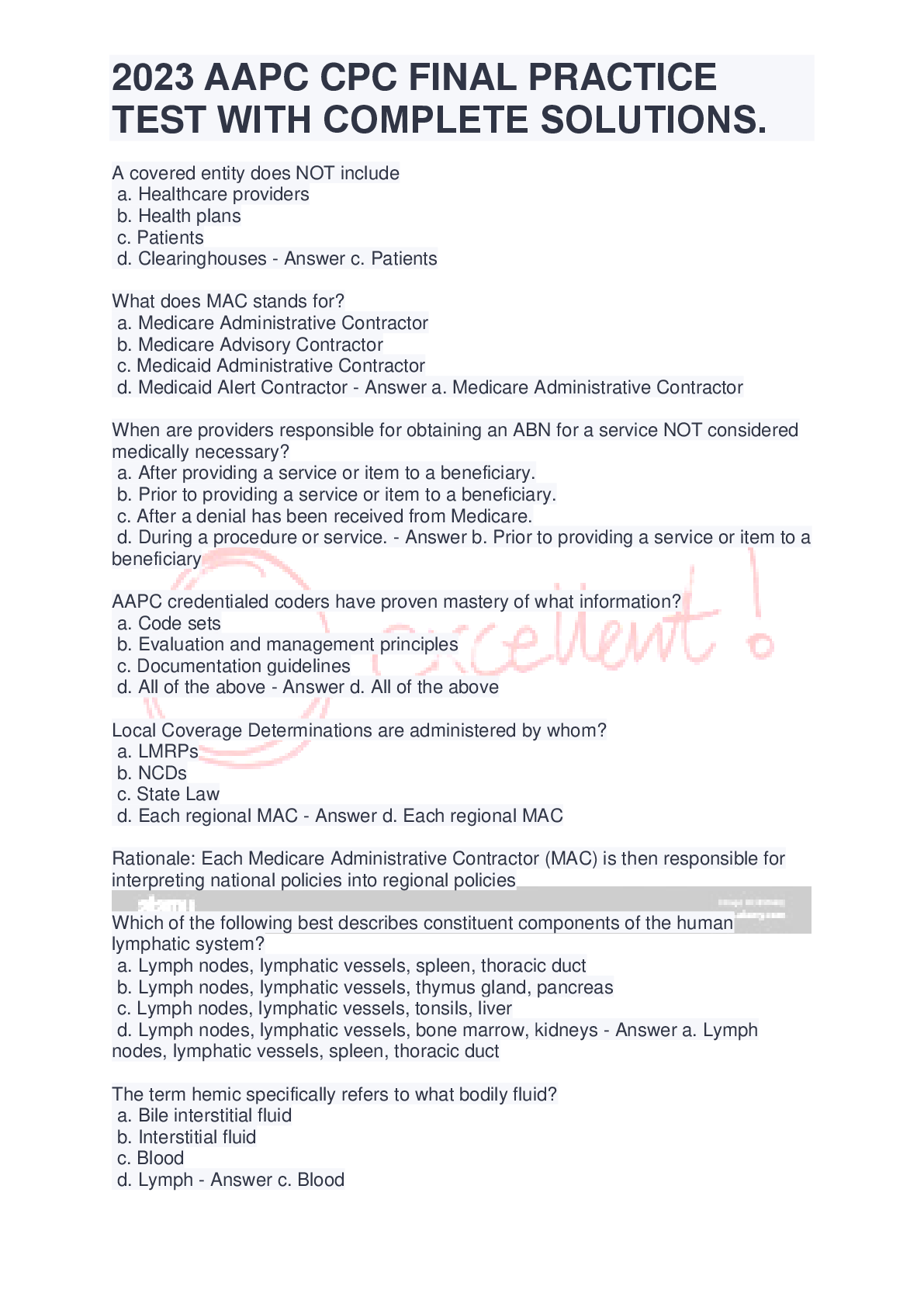
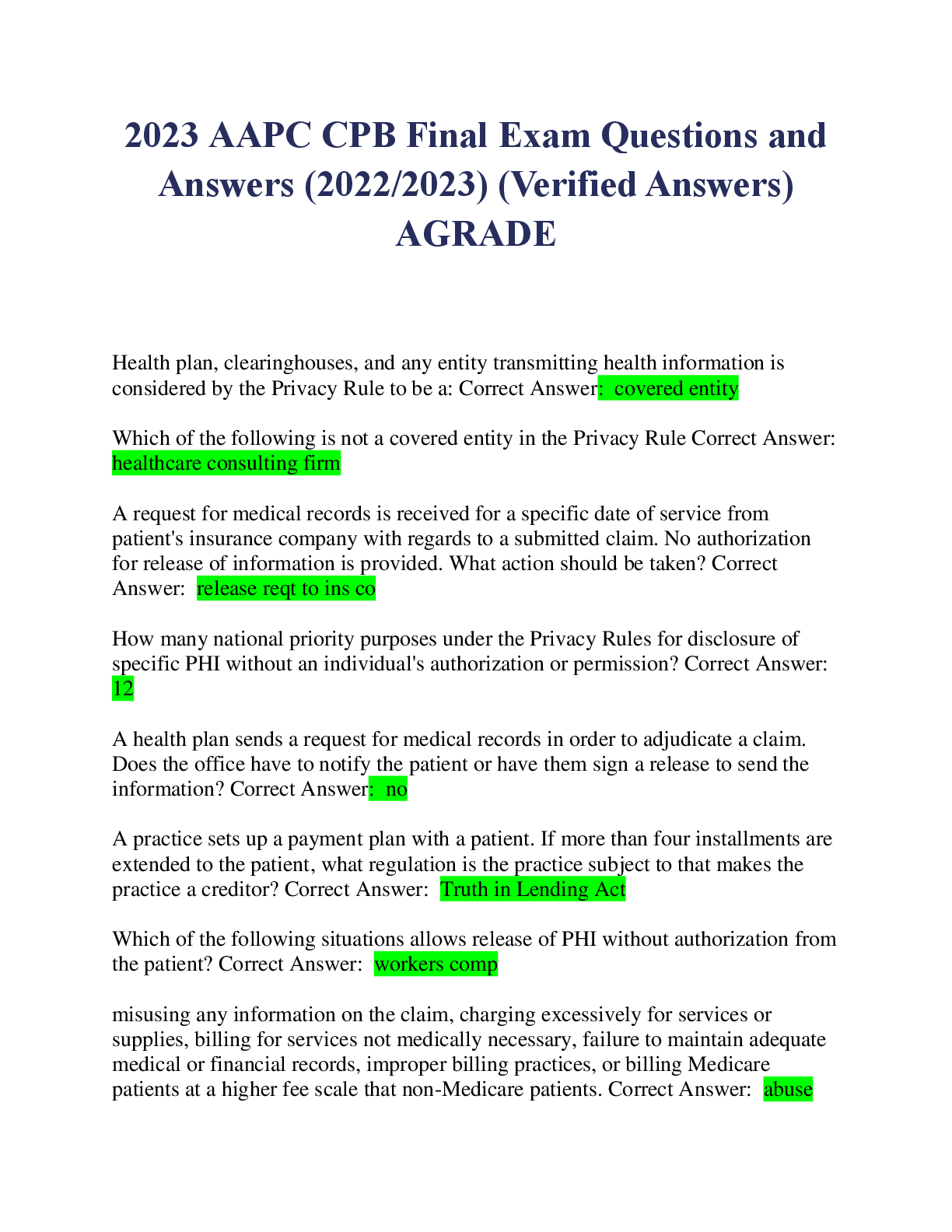
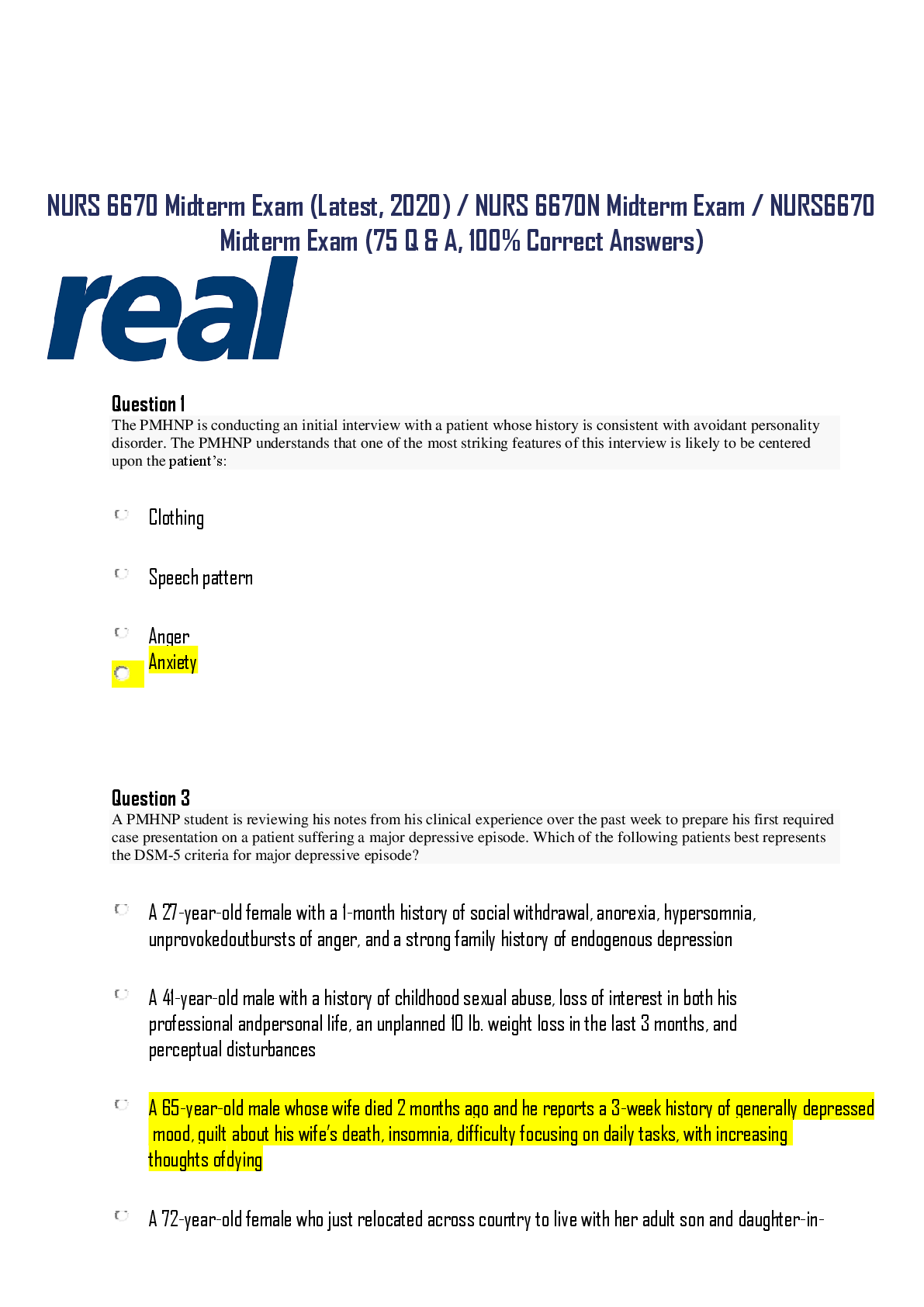
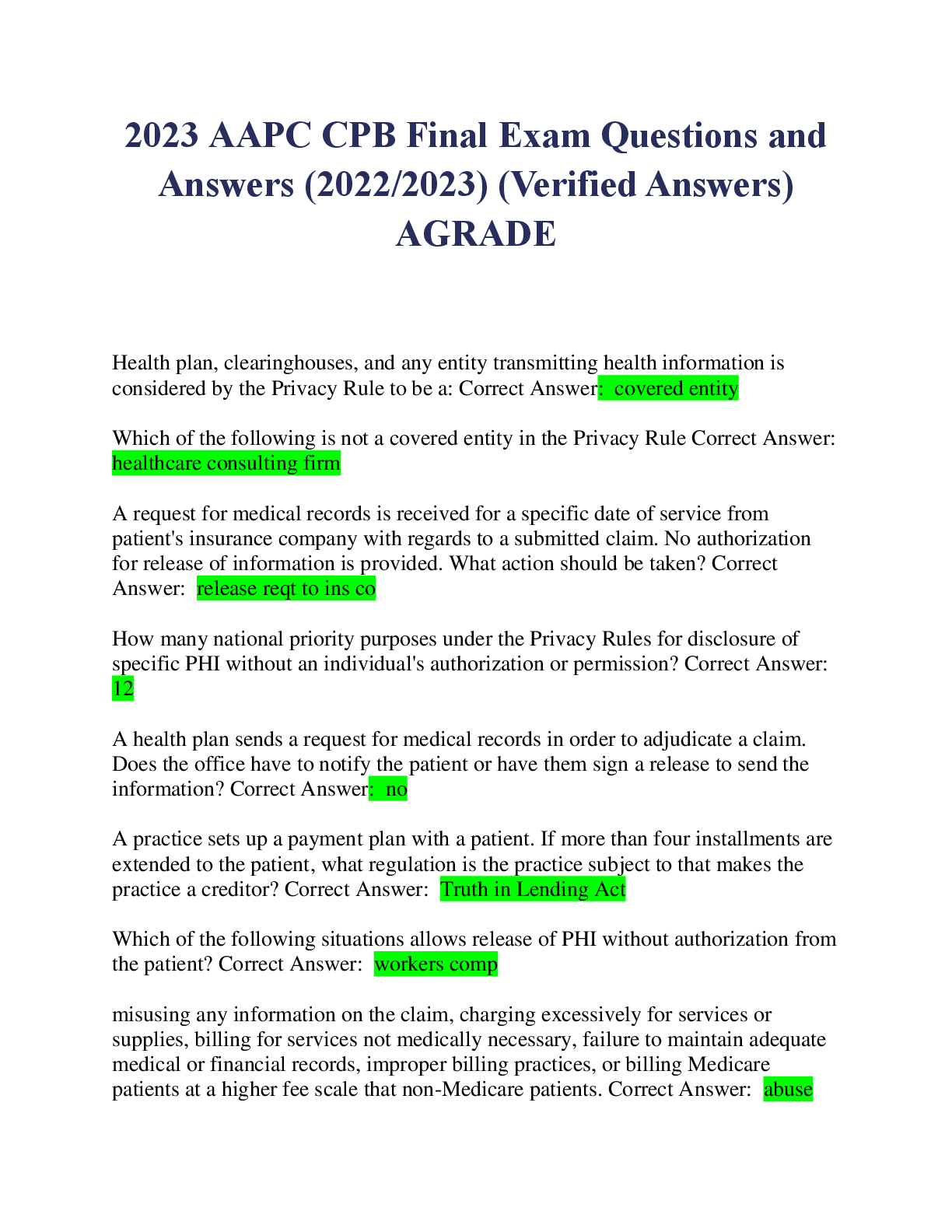
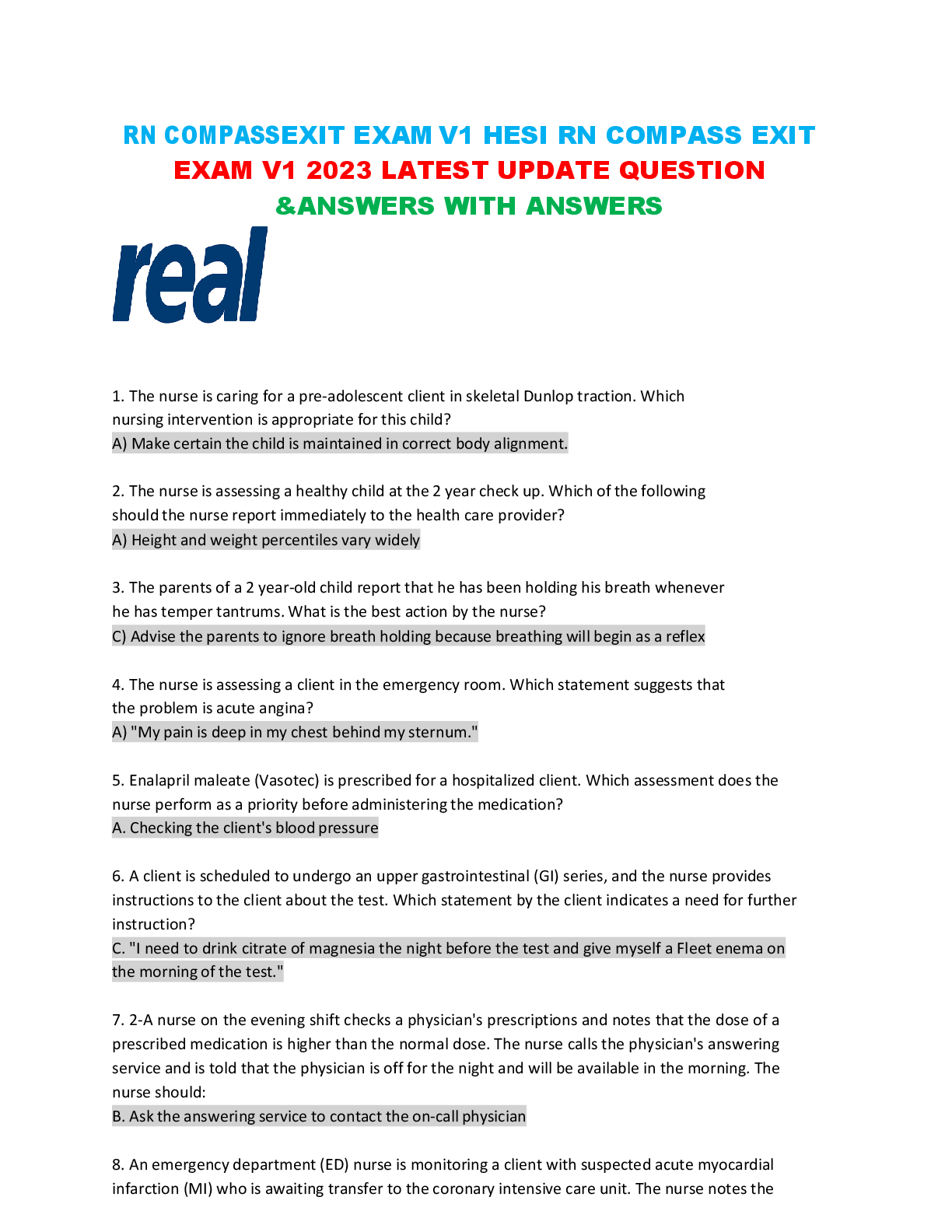



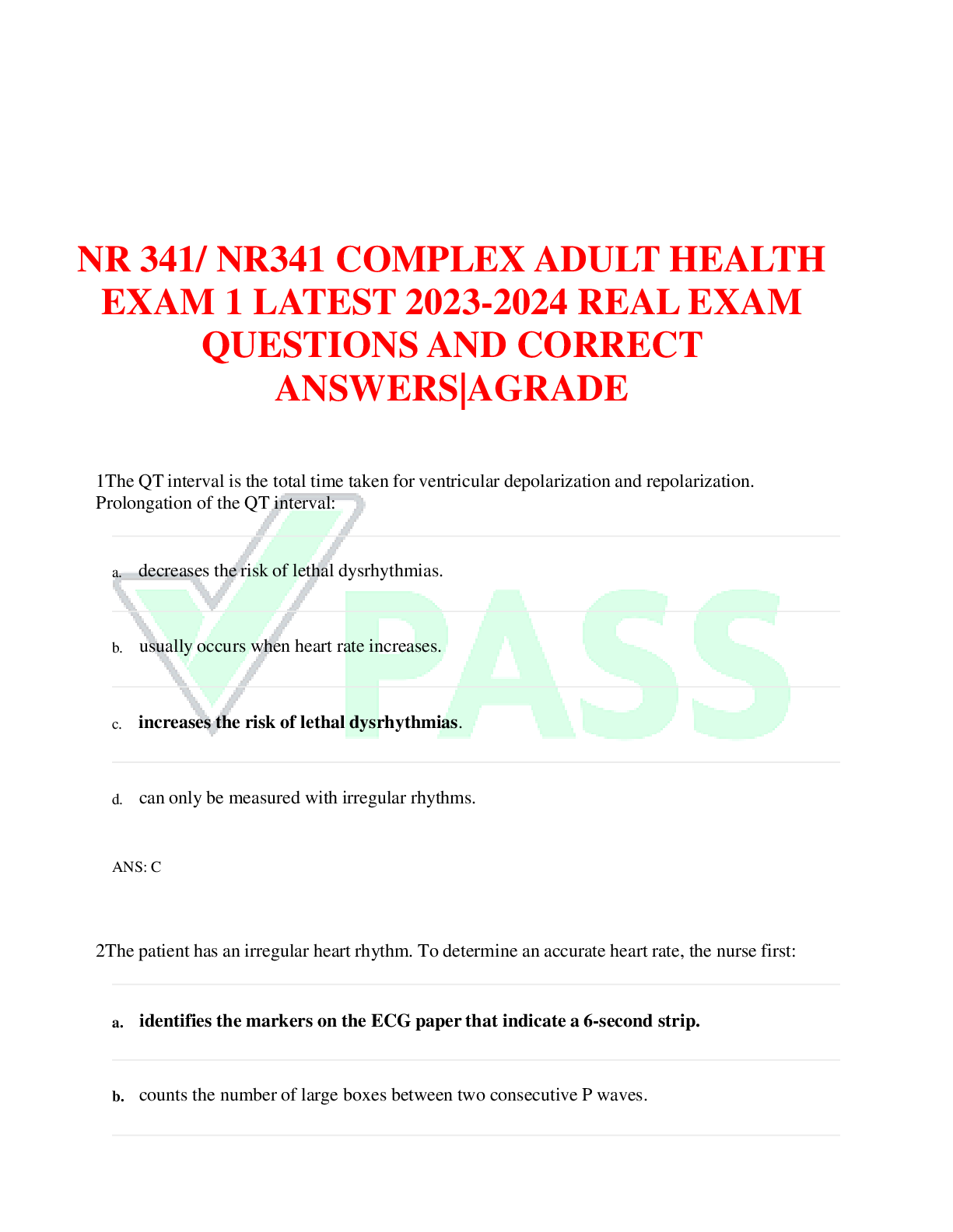
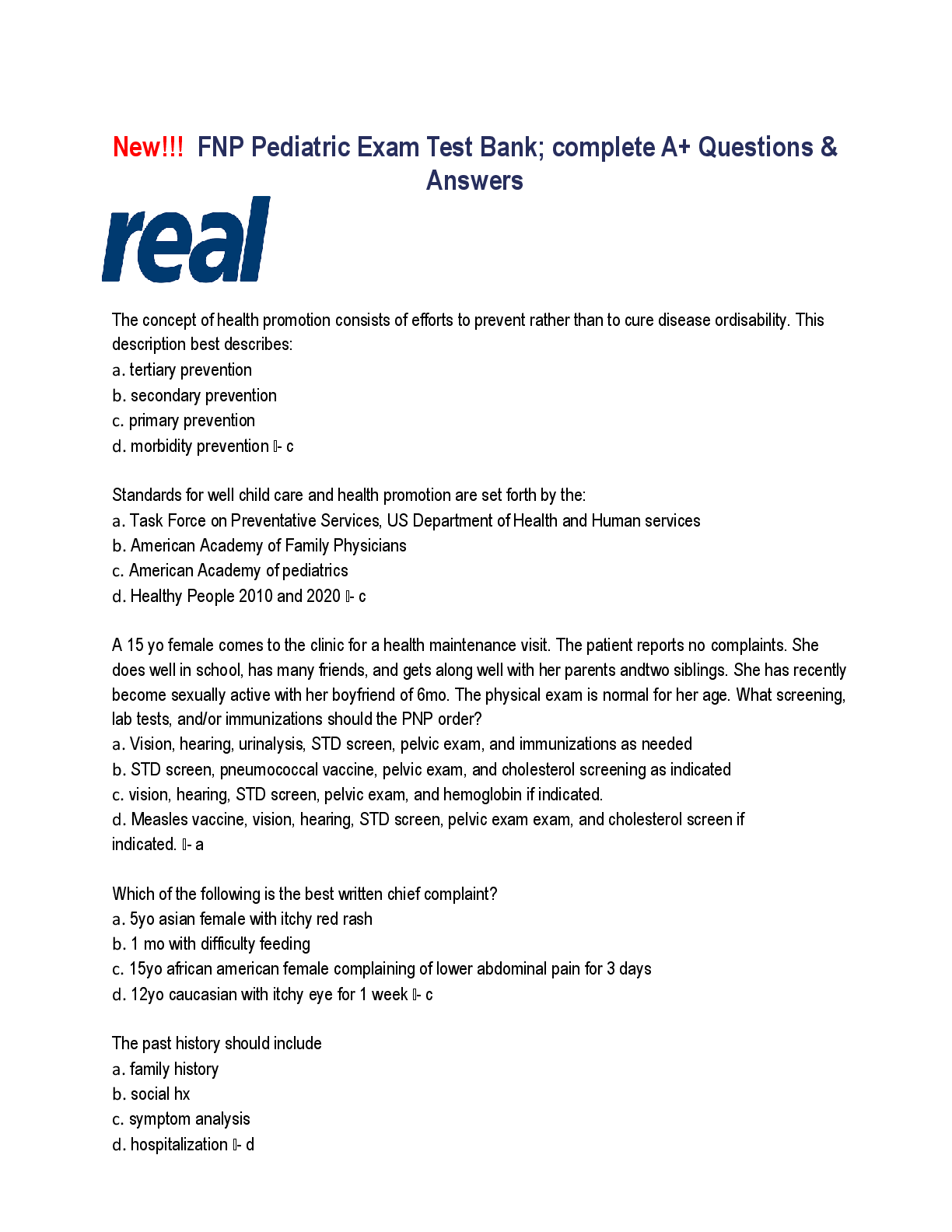
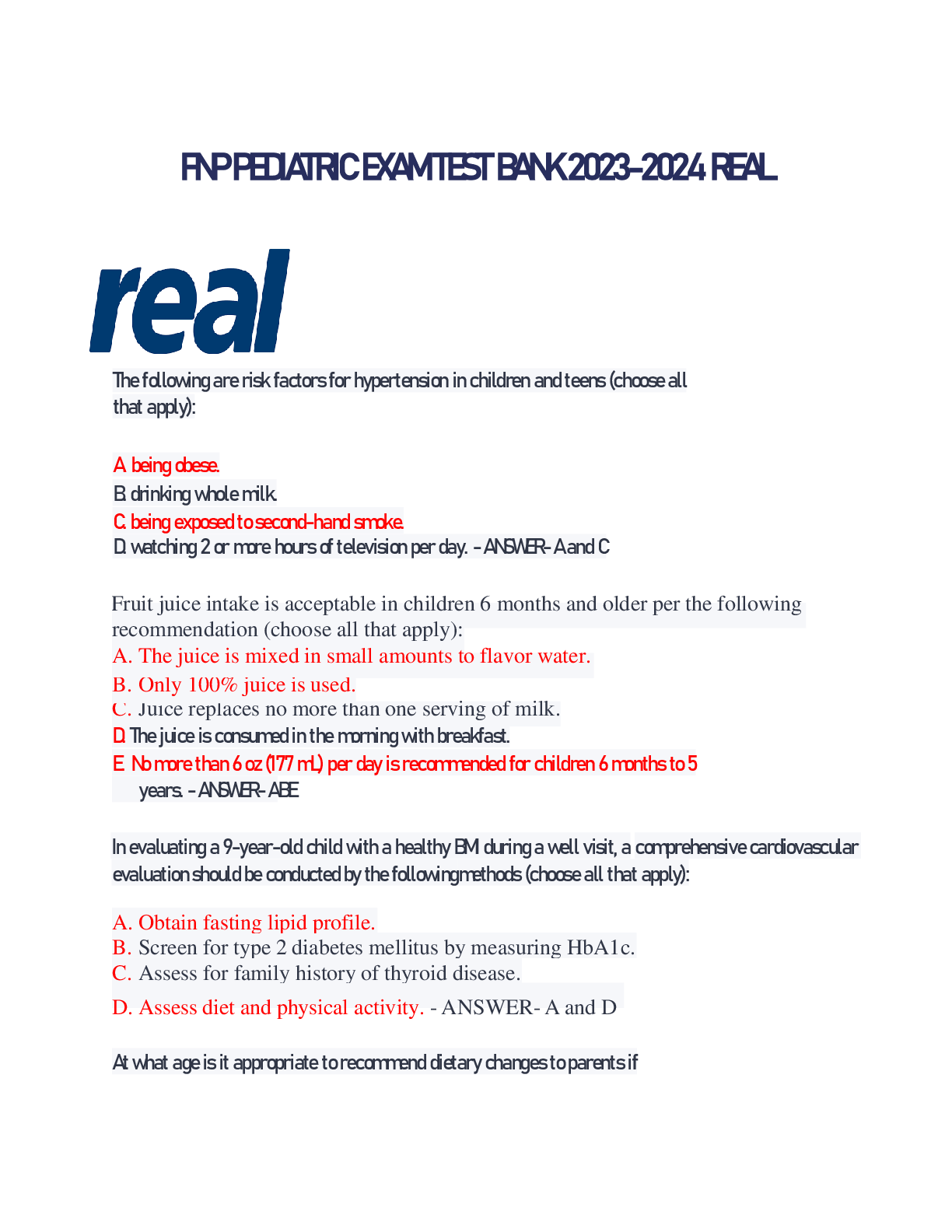
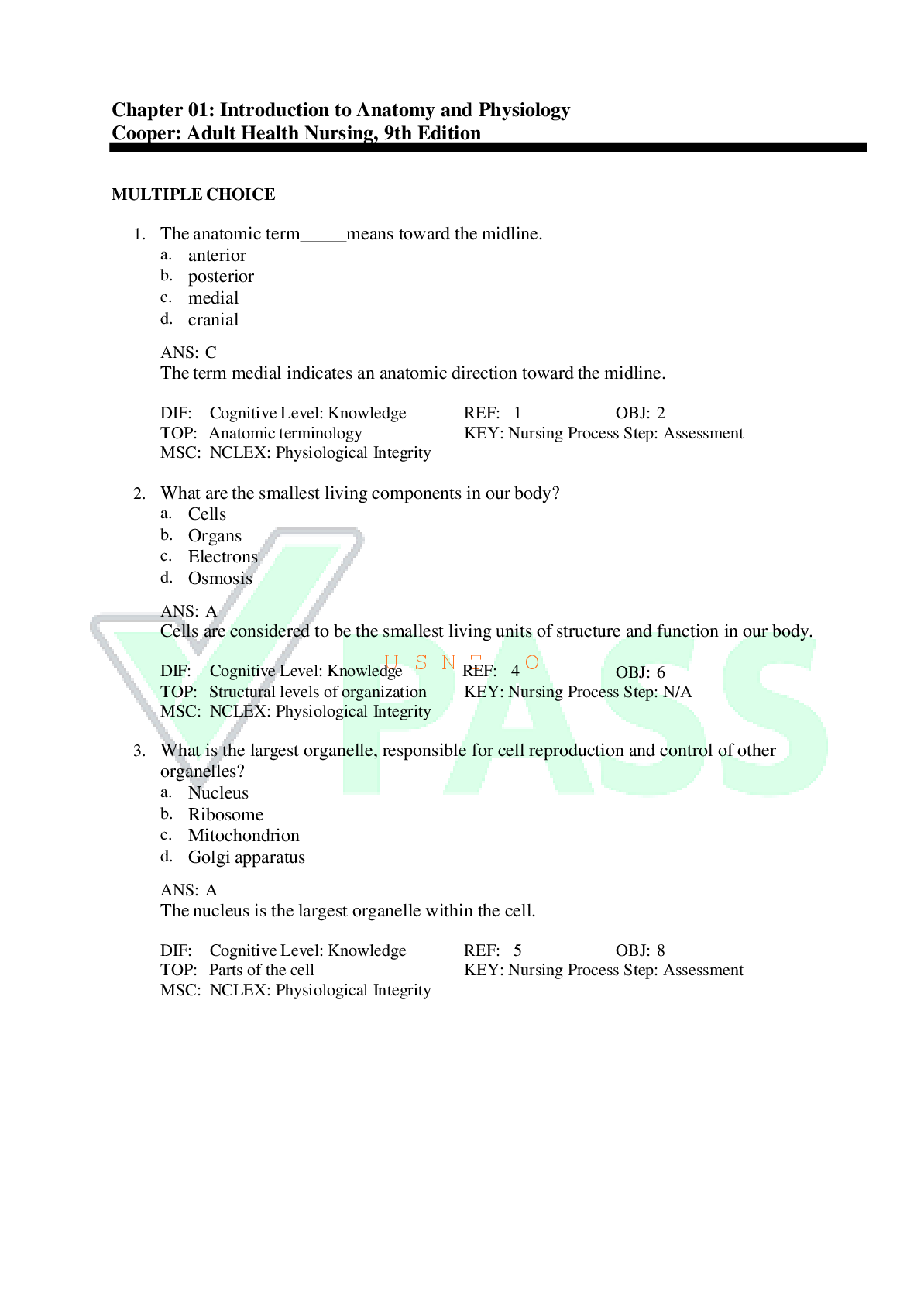
.png)


.png)
.png)

 (1).png)
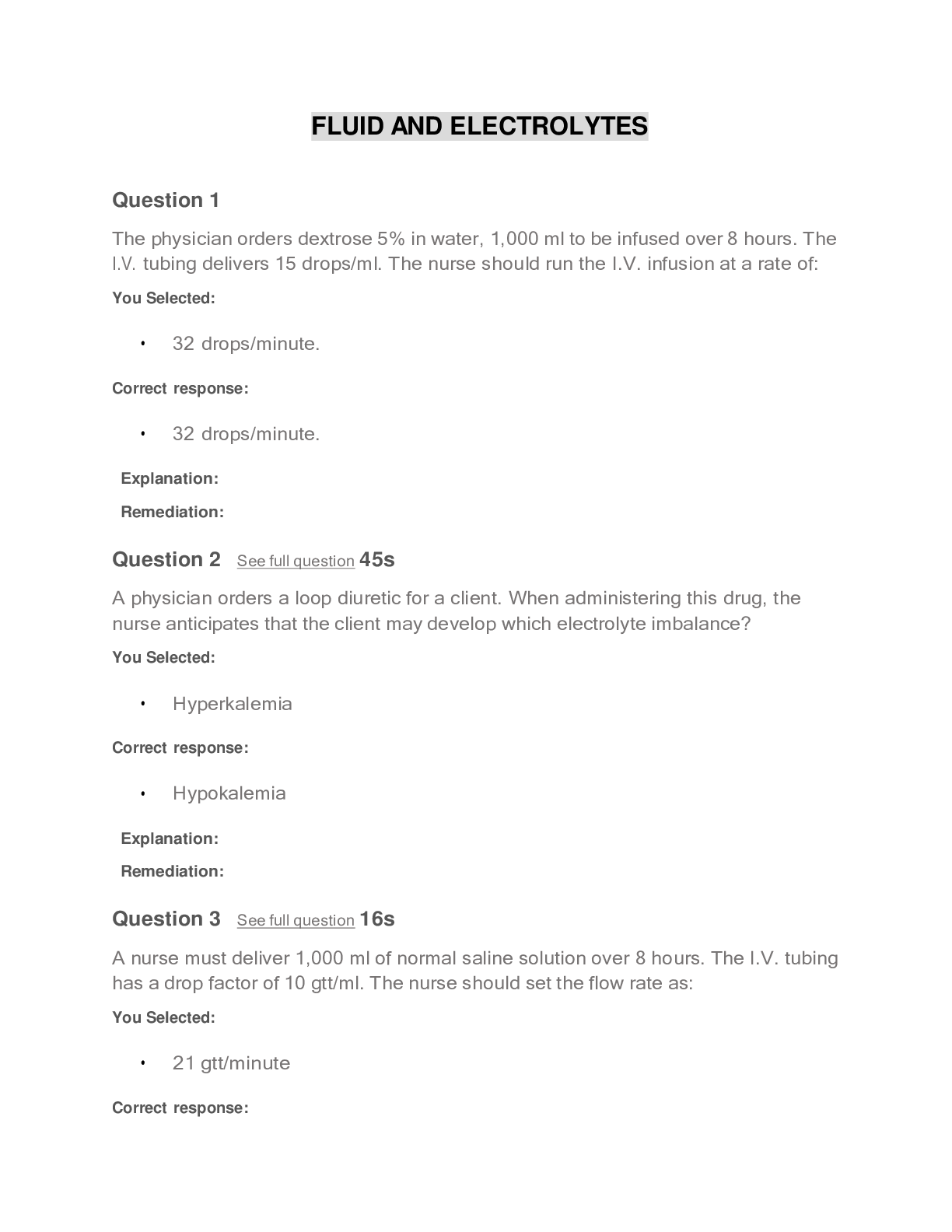
.png)


